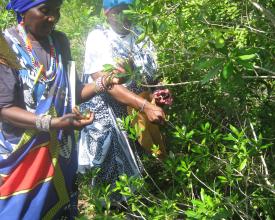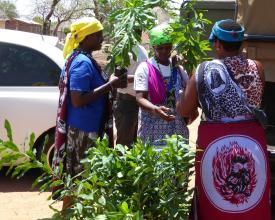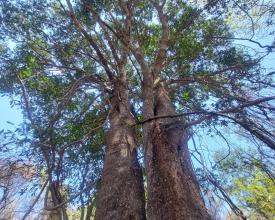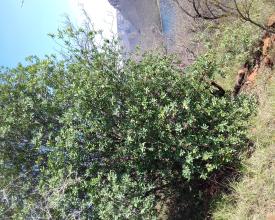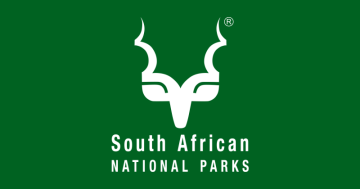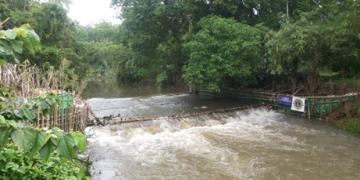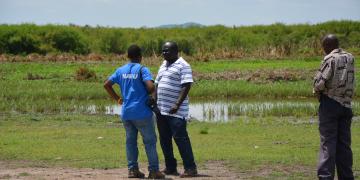
Working with Traditional Healers to save an Endangered Medicinal Tree: Pepper-bark Tree (Warburgia salutaris)
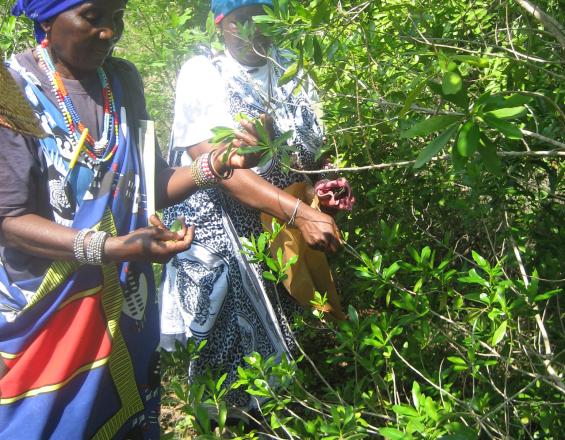
Warburgia salutaris– Pepper Bark Tree (English), Xibhaha (Tsonga), isibhaha (Zulu), is harvested for various reasons such as timber and firewood – with its use in traditional medicine having the most notable impacts. Demand for this species was so high that even populations within protected areas were being harvested. In efforts to mitigate the decline in this species, a very successful conservation model has been developed and implemented since 2009 to reduce the threat of overharvesting of wild subpopulations present within Kruger National Park (KNP) in South Africa. Approximately 30000 saplings were mass propagated in a partnership between the South African National Parks (in the Skukuza Indigenous nursery) the Agricultural Research Council (ARC), SAPPI and the South African National Biodiversity Institute (SANBI). These saplings have been distributed to user groups in the vicinity of the Kruger National Park, both in Limpopo and in Mpumalanga Provinces, including to Traditional Healthers.
Context
Challenges addressed
Even though W. salutaris can withstand a certain degree of harvesting, through regrowing stripped bark and production of coppice shots, detrimental harvesting methods such as ring-barking consequently results in death of the tree. Warburgia salutaris is highly sought after because it has chemical medicinal properties that can treat various ailments such as malaria, colds, and coughs. Hence the demand for its tissue (leaves, bark, and roots) is increasing with an increase in human population globally. Other development activities such as agriculture also impact the wild populations of this species due to habitat loss because areas are cleared out to make way for agricultural activities, residential areas, shopping malls, sand mining and other social developments.
Location
Process
Summary of the process
These projects aim at mitigating the decline of W. salutaris in the wild while ensuring the sustainable use of this species for socio-cultural well-being of the communities.
Building Blocks
Biodiversity Management Plan (BMP) for six threatened medicinal plants in Ehlanzeni District, Mpumalanga province, South Africa.
This management plan has been developed following the BMP-S norms and standards however in addition it also addresses the need of South African citizens for the long-term access to medicinal plant species for health care. The plan has been conducted for six medicinal plant species naturally occurring in Ehlanzeni District of Mpumalanga Province, Alepidea cordifolia, Bowiea volubilis, Dioscorea sylvatica, Haworthiopsis limifolia, Siphonochilus aethiopicus and Warburgia salutaris. It has been developed by a wide array of stakeholders including conservation authorities, horticulturists, researchers, law enforcers, users of traditional medicines, those involved in the traditional medicine value chain (traders, and Traditional Healer Practisioners) and Non-Profit Organisations (NPOs) interested in supporting rural livelihoods.
Enabling factors
This report details the outcomes of a process to collaboratively develop a Biodiversity Management Plan for the six species. Since many Traditional health practitioners’ (THP) in the area already grow certain medicinal plants in their home gardens, and many others are open to doing so. This plan explores options around cultivation as a possible tool for conserving and sustainably using these plants. Acceptance of cultivated medicinal plants depends on the species and its uses, as well as its socio-cultural significance within communities.
Lesson learned
The BMP-S will be implemented in a complex and dynamic environment; therefore, over-arching principles will govern the successful overall implementation and provide context for future adaptive management.
Strategic conservation of the Endangered Pepper-bark Tree (Warburgia salutaris) in South Africa.
Secure an additional 10,000 ha of critical habitat to protect Warburgia salutaris populations in the western Soutpansberg through expanding the Protected Area created in the first project, adding additional critical habitat, and creating a buffer around properties with W. salutaris present. Rehabilitate 20 hectares, and maintain 20 hectares, of prime W. salutaris habitat through invasive tree eradication along riparian areas within the protected area and neighbouring properties. Engage with key stakeholders (Traditional Health Practitioners (THPs), market operators and communities) to significantly increase cultivation of W. salutaris and reduce harvesting pressures on wild populations.
Enabling factors
Helathy working relationships between different stakeholders, such as the protected areas and Traditional Health Practitioners.
Lesson learned
This project is still at the planning phase.
Impacts
In 2020, an extended consortium of conservation partners led by SANBI developed a Biodiversity Management Plan (BMP) for six species, which included W. salutaris. The BMP involved community engagements with the network of Traditional Healers working in the region to encourage a collective approach, which is inclusive of the socio-cultural beliefs of the communities before implementing conservation initiatives. As a result of this engagement there will be an expansion of the Traditional Healer home-garden approach for a suite of medicinal species throughout Mpumalanga and Limpopo. A further propagation and distribution project is also being planned for the northern Limpopo region run by the Endangered Wildlife Trust with support from the Franklinia Foundation. As a result of conservation interventions undertaken, it appears that pressure on wild populations is decreasing. As a result this species has been down listed to “Vulnerable” in the 2021 Red List assessment undertaken as part of the IUCN’s Global Tree Assessment. This is an excellent example that conservation efforts can mitigate pressure on species while still meeting the cultural and health needs of local communities.
Beneficiaries
Traditional Healers play a central role in South African communities, as they are the main health care providers to the majority of rural based South Africans.

